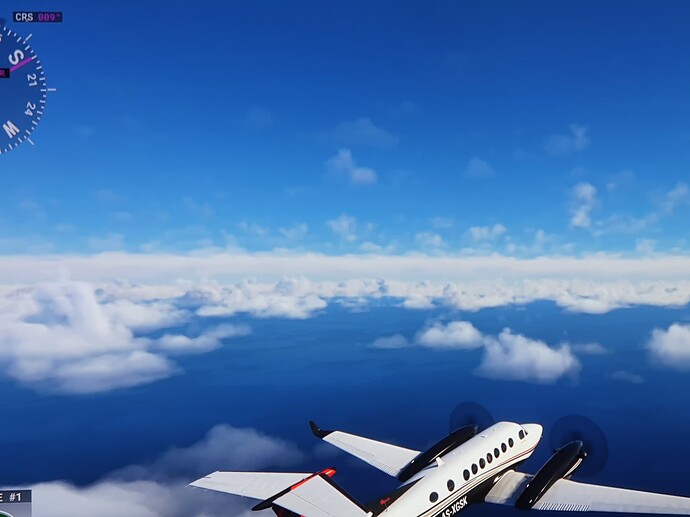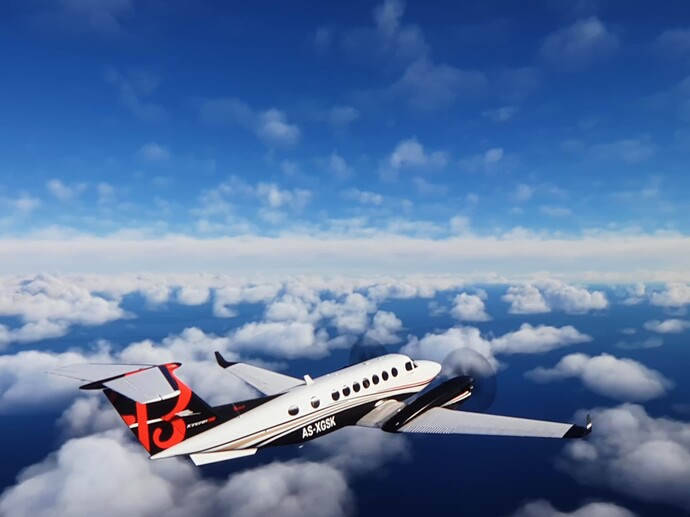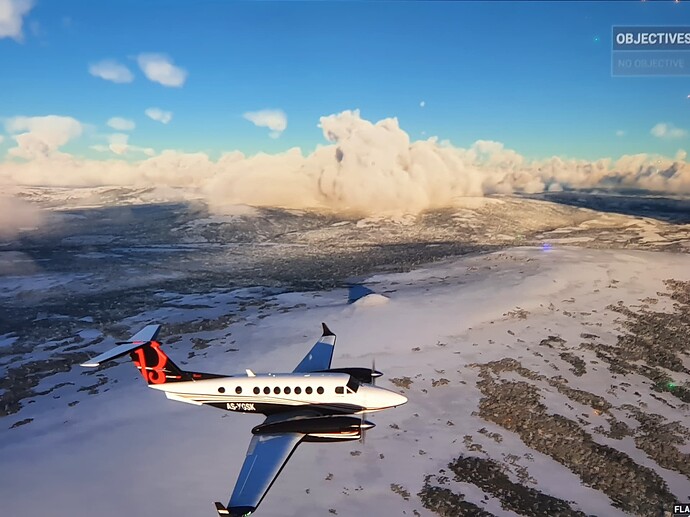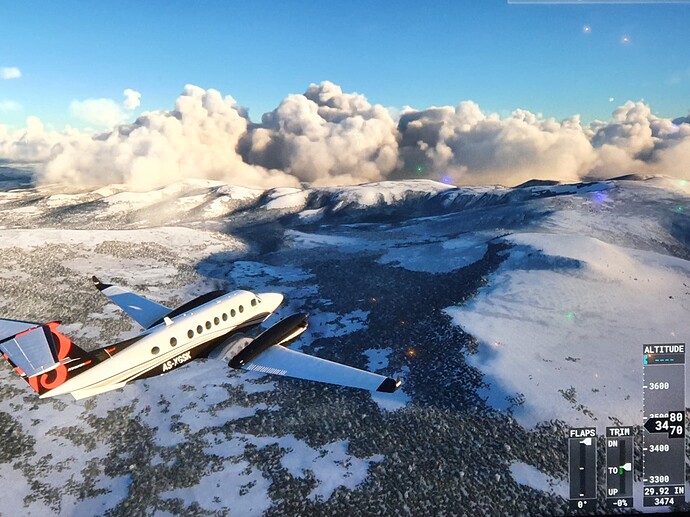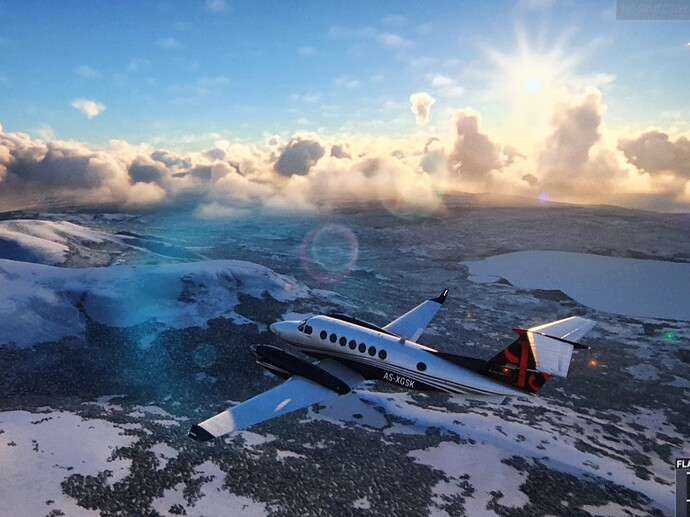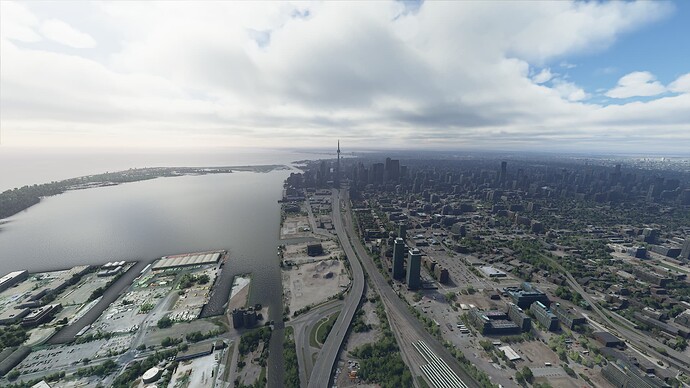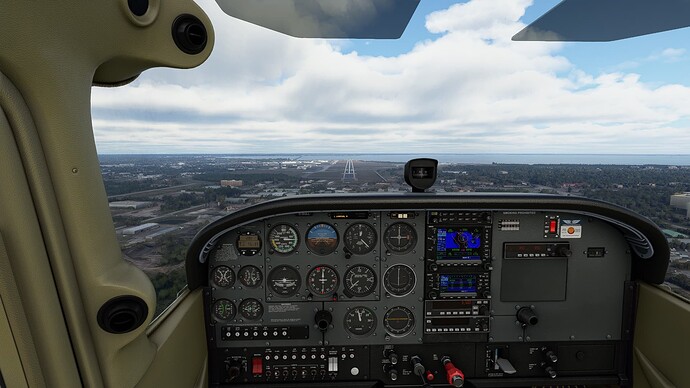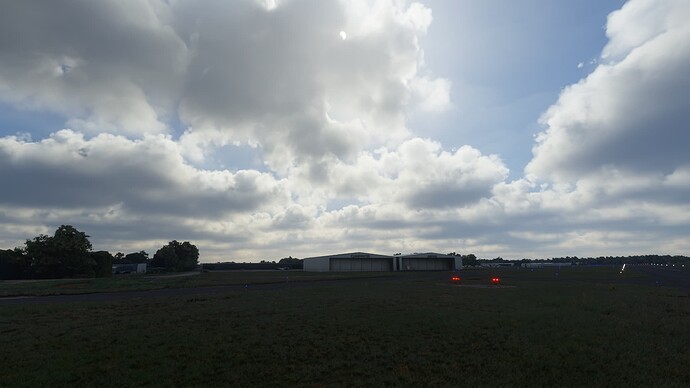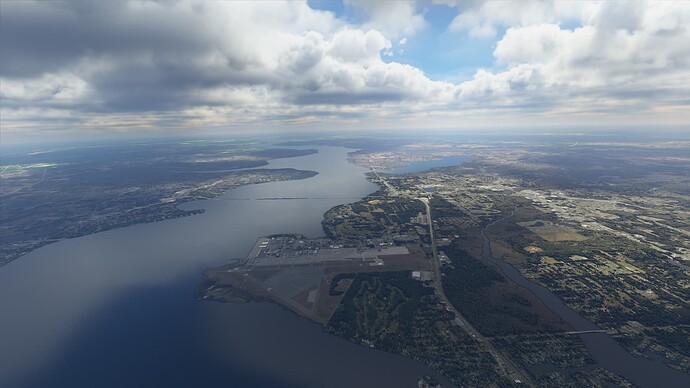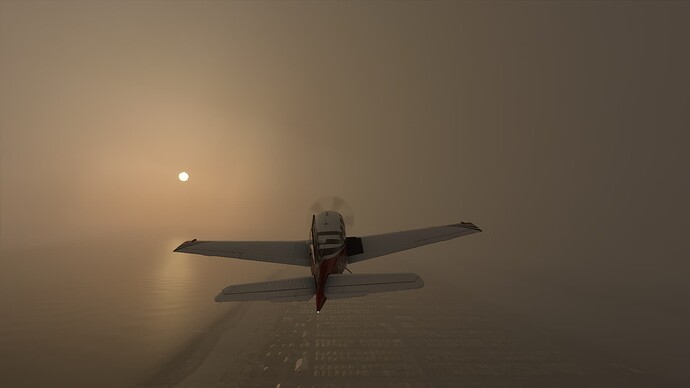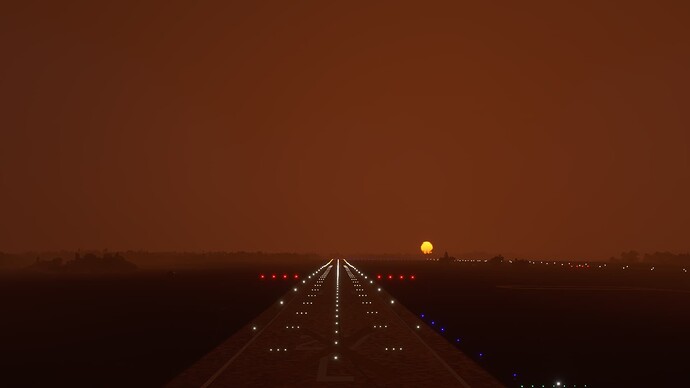I think Asobo knows what they are doing, after all we have seen what this game is capable of doing when it works. As I said the question in my opinion is, why it hasn’t been fixed yet? And how this new METAR is going to work smoothly with meteoblue…
Thank you WxMarc for your detailed and comprehensive examination of the cloud system within the Simulator. You raise a number of interesting points.
It’s obviously extremely difficult to recreate perfectly realistic cloud formations within a simulation, without devoting far more computing power than is available on a PC. Clouds themselves, while categorised into groups for convenience, are infinately variable in real life. I suspect the desire to accurately replicate METAR reports at airfields has complicated the process completely.
My suggestion would be that Microsoft concentrate on their original system of trying to create the real world weather system, with weather fronts and cloud systems generated on a global scale, while using METAR data to validate the process rather than replicate individual airfields weather.
The problem with METARS, as I see it are:
- They only show historical data, normally compiled hourly. As soon as they are issued they are out of date.
- Being compiled at an airfield they only show the weather at one small location, subject to very localised factors.
- Their purpose was never to reproduce the entire weather system at an airfield, but to provide an indication to a pilot as to whether a flight can safely land or take off. So certain factors are prioritised, wind speed and direction, visibility and cloud base, temperature pressure and precipitation.
- In order to accurately provide pilots with information special met reports are added as weather conditions change, ATC provides live wind information from anemometers, visibility changes are monitored electronically, sudden weather deteriorations which are observed by pilots or ATC are broadcast.
In reality METARS are only a guide to past weather conditions, and any attempt to religiously recreate them in the Sim and then make these conditions apply until the next METAR is issued an hour later, is completely unrealistic.
My own experience appears to be that the previous fluid and believable MSFS weather is now subject to frequent abrupt and unrealistic visual changes which completely ruin the immersion of flying and occasionally cause the autopilot to drop out. It does appear that destination airfield weather is more correctly aligned with the previous hours out of date METAR, but less aligned with the local weather system. I would rather the original, pre update 7, system weather be reinstated, and advice be taken from experts such as WxMarc as to how the weather and clouds can be made to appear more realistic.
I want to post 2 photos just taken near the Azores
Again for some reason to the east, you can see high clouds of a weather system but preceded with the usual low altitude cumulus…
And to west just the low altitude cumulus
I just can’t understand the inconsistencie here
Did you run any tests using the overcast preset as a starting point? It produces a different type of cloud by default. I’d call it stratocumulus but Im not a meteorologist.
also- did you try mixing layers? and did you notice that a cloud layer can completely change in appearance just by adjusting the layers altitude?
I didn’t try switching the presets. Thanks for the tip! I’m surprised that changing the preset would affect the cloud type if coverage, density, and scatter are held constant. I’ll test it this evening.
I think they will set cloud type based of METAR statement. Like broken always will have the same type of clouds. Broken is not a description of what type of cloud to set in my opinion. That is why we see same cloud type everywhere. Broken states how much of the sky is covered by clouds.
Are we are getting a bit too demanding for Atmospheric and Live Traffic Eye Candy for a game ?
Just a thought.
lol, i am not so sure at all, they make to many real blunders.
not at all, it was way better before su7, most people want that back.
It’s in the weather we fly. I think that is one of the most important aspects of it.
I honestly don’t think so. Realistic terrain and ground imagery is a major selling point for MSFS, and I would say realistic weather is even more important for simulating the experience of flight.
WxMarc,
I agree with you concerning the terrain and ground imagery. You are definitely right on that count. I was just not quite sure that the Live Weather and Live Traffic was worth all the programming headaches for MS/Asobo and the performance demand on the computer hardware. It just seems to be a programming nightmare that never gets fixed and impedes progress on core glitches that have been present since release.
They have mostly focusing on graphics/performance issues until now. I think it’s about time they focusing on weather. As soon as they do many start complaining it only about weather but that is actually more important than performance issues. I think adding METAR to create clouds was a bad decission. Because it will make them have more issues with weather that we didn’t need. The clouds were good without them.
I don’t know how accurate the weather used to be, but it used to be fairly convincing.
Now it may be more accurate but it’s nonsensical. You pop from one weather pattern to another in the space of a second. IRL it’s not like that: you can see the weather conditions approach.
I think they should go back to how it was before as a base point, then try again to improve it. Note that I have no idea how it was done, but the results pleased me better before SU7.
It’s not more accurate at all. At the moment you see clouds that you shouldn’t see in many places, like convective clouds in polar regions, clouds on the ground, and absence of overcast.
This photos have been taken near Ancorage just now
Problem is, they are on the ground and they are convective…
I just tested several of the other presets. As far as I can tell, the unique appearance of the default clouds in each preset is entirely determined by the coverage, density, and scatter parameters. Once I changed the parameters to the same values I used for my test screenshots, the clouds looked nearly identical. As an example, here is my original test screenshot using the Clear Skies preset and a cloud layer defined between 920 ft. and 3000 ft. Cloud parameters were: coverage = 100, density = 1, and scatter = 100:
Here is what the weather engine draws with the Few Clouds preset with cloud parameters set identically:
If I keep the thickness of the layer the same, but move it upward with the base at 7920 ft and top at 10,000 ft, the layer still looks similar:
Here is an example from the Overcast preset with the original cloud parameters:
If I define the top layer with the same thickness and cloud parameters, it looks a bit more opaque than the low and middle layers:
It appears that the lowest layer has a more pronounced cumuliform shape than the upper two layers (although all layers have cumuliform features). Here is a layer between 920 ft and 30,000 ft with coverage = 70.86, density = 1.0, and scatter = 0:
I get a very similar appearance using the lowest cloud layer, regardless of how high the cloud base is:
But if I use the middle cloud layer with the exact same parameters and thickness, I get clouds that are cumuliform, but more subdued:
Using the upper cloud layer, the cumuliform appearance is less pronounced than the middle layer:
Based on these tests, the weather preset does not have any affect on the clouds aside from the default combination of cloud parameters used for each preset. Cloud appearance depends on the thickness of the layer and the three parameters (coverage, density, and scatter). Furthermore, each of the three cloud layers also has a unique default shape. The lowest layer has the most pronounced cumuliform features, and the convective appearance softens in the middle and upper layers.
On my system, if I adjust the coverage, density and scatter settings to get a certain cloud layer appearance and then do nothing but move the layer up and down, it will alter the appearance greatly. I’m not sure why my system would be different than yours.
Do you only test from above the clouds? I do all my adjusting from below because thats where I like to fly.
Here’s a couple shots with a modified overcast theme .smoother, brighter softer and more windswept looking clouds.
and heres a modified scattered theme. Note how much busier the clouds are
It has been a while since I worked with the themes though so maybe now it doesnt matter how you start. I should get back into it I guess.
What a pity all your hard work and detail was not paid for nor will not be acted upon or acknowledged. Save your energy man.
And this is why the weather we have at the moment is often just cumulus, because the clouds altitude for some reason is bugged, they are lower than they should be, often on ground still
Thank you @WxMarc for this profound analysis. May I add, that the opacity problem also leads to the severe “sun bleeding through clouds” problem that exists since release, I’m afraid. Especially in sunset/sunrise conditions the visuals created by the simulator are totally unrealistic and a real immersion killer. I really do hope, Asobo take this thread seriously and that they are aware of the full scope of the problems that exist. (Which I’m sure they are).
Here we should have a thick overcast layer, however the sun is still visible:
This is supposed to be a grey, cold, overcast november afternoon; note the Savannah-like sun disc:
